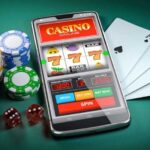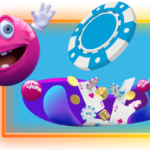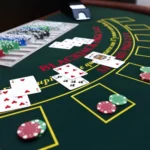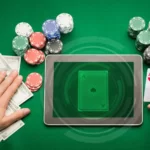Being able to read the body language of other players at the poker table is a crucial skill that can help you identify live tells and gain valuable information about their possible hands. Over time, skilled poker players learn to subtly disguise their own body language reactions while also closely observing opponents for any revealing tics or behaviors that may betray weakness or strength. In this article, we will explore some of the most common ways poker players unconsciously telegraph information through their nonverbal actions and provide tips for deciphering live poker tells at the table.
Microexpressions
One area ripe for detecting live poker tells is observing opponents for brief microexpressions that flash across their face for a fraction of a second. These involuntary facial tics are nearly impossible to consciously control and often reveal a player’s true emotions even if they try to mask them. Some key microexpressions to watch for include:
- Fear/Anxiety: Raised inner eyebrows, tightening of the lips or corners of the mouth pulled down. This could indicate a player is worried about their hand.
- Happiness/Joy: Raised cheeks and squinting around the eye region. A player may display this briefly when catching a card they wanted.
- Disgust/Contempt: Raising one side of the upper lip. Look for this reaction when a player misses a draw or gets a bad beat.
- Surprise: Raised eyebrows and eyelids widening. Helpful for spotting when an opponent catches an unexpected card.
To catch microexpressions, focus your observation on a player’s face immediately after a betting round concludes or significant cards are dealt. Watch in slow motion if possible. Even experienced players can sometimes fail to suppress these split-second tells.
Body Positioning
The way a player positions and holds their body at the table provides loads of non-verbal clues. Be on the lookout for:
- Leaning forward: Indicates eagerness and strong interest, possibly a strong hand. Leaning too far in could denote vulnerability.
- Slouching back: A sign of weakness, discomfort or hesitancy about their holding. Look for this reaction after the flop.
- Protecting chips: Closely guarding chips with arms or hands crossed may imply weakness needing protection.
- Open posture: Arms uncrossed and not shielding the chips projects confidence in one’s cards. Look for an open stance from strong players.
- Fidgeting/Nervous energy: Restlessness often coincides with anxiety about one’s hand. Watch for feet shaking, chip tapping or other outlet behaviors.
Carefully tracking shifts in a player’s seat position, lean angle and limb positioning over betting rounds can signal how comfortable they feel with their hand at different street. Be observant for incongruent body language clues.
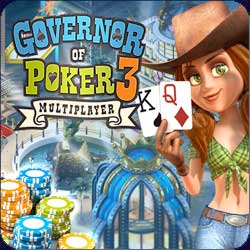
Gesture Analysis
The way a player physically gestures and interacts with their cards and chips provides a treasure trove of telltale signs. Some common gestures to dissect include:
- Card manipulation: Aggressive card flipping could imply strength, while gentle card handling may signal weakness or uncertainty.
- Chip/ cash stacking: Neatly stacking chips in small piles may indicate anxiety, while spreading them out evenly shows confidence.
- Face/ head touching: Self-soothing behaviors like cheek/chin rubbing, nail biting or hair touching often accompany stress when holding weaker hands.
- Eye contact avoidance: Dodging eye contact with other players can mean weakness, while strong sustained gaze projects intimidation.
- Smiling/ laughter: Genuine smiles usually accompany strong holdings, while nervous chuckling may give away anxiety or deception.
- Shrugging/ hand gestures: Vague shoulder shrugs or haphazard hand motions can betray lack of clear direction or commitment to a holding.
Analyzing an opponent’s unique gesticulation patterns over time helps identify tells. Look for inconsistencies compared to their normal tendencies.
Facial Expressions
The face offers a minefield of potential poker tells through subtle shifts in expressions that are hard to camouflage. Pay close attention to:
- Eyebrow position: Raised inner brows often equal tension, while relaxed brows project confidence.
- Smiling: Real smiles vs. fake “politeness” smiles can reveal genuine joy or deception.
- Eye contact: Maintaining vs. avoiding eye contact transmits messages of intimidation vs. uncertainty.
- Eye movement: Darts or shifty eyes may reflect inner conflict when contemplating a decision.
- Mouth/ lip position: Thin lips or biting suggest tension, relaxed full lips indicate comfort.
- Facial tension: Wrinkled foreheads or tightened jawlines portray stressful assessment of options.
- Pupil dilation: Enlarged pupils can denote excitement or intensity upon catching a strong holding.
With experience, you learn to notice the minute changes in opponents’ expressions that give away emotions like fear, dread or delight with different game events.
Also read: Best New USA Online Casinos with No Deposit Bonuses in 2024
Verbal Clues
While our focus is non-verbal communication, be wary of incongruences between players’ verbal declarations and their accompanying body language tells. Some examples:
- Excessive chatting: Nervous nattering or long-winded speech detracts from visual tells and suggests bluffing.
- Loud confidence: Overly boisterous assertions of hand strength can overcompensate for real insecurity.
- Evasive answers: Vague deflections dodge direct questions and hint at concealment of weakness.
- Speech fillers: Ums, uhs or other stutters may betray inner conflict weighing options.
Players may try to verbally disguise tells, so watch how their words align with non-verbal signals. An insincere verbal “tell” like praise for poor cards could give their real hand away.
Application
Now that you understand some common body language tells to spot, how can you apply this knowledge at the poker table? Here are some tips:
- Closely observe new players at first: Note normal tendencies vs. quirks under pressure.
- Study changes from pre-flop to river: Look for tells emerging later, signifying adjustment to cards.
- Consider context: Hands can influence mood. Factor in recent wins/losses that may alter reactions.
- Trust your gut: Intuition plus visual tells together provide holistic read into opponent mental state.
- Take notes unobtrusively: Jot down noteworthy behaviors without alerting others. Review later.
- Stay focused: Distractions detract from pick up subtle tells. Commit full attention during hands.
- Practice sensitivity: Fine-tune ability to discern small expression, stance changes over time.
- Don’t overestimate tells: They provide clues, not certainty. Always make independent decisions too.
Conclusion
Mastering the ability to spot subtle emotional tells through opponents’ body language confers a major advantage at the poker table. While experience is key, carefully analyzing areas like microexpressions, gestures, posture shifts and verbal/non-verbal incongruence helps identify poker tells that leak valuable strategy information. With dedicated practice applying the concepts discussed here, your intuition and perception of live tells will continue improving to gain psychological insights into other players’ true hand strengths.


